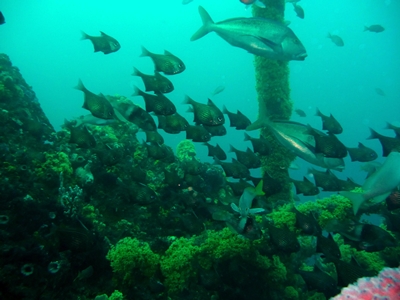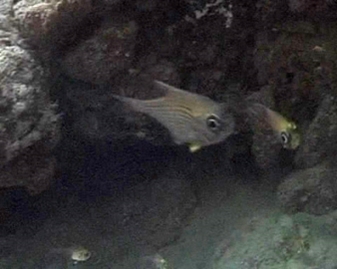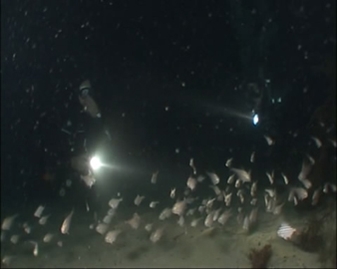General Description
Body deep compressed, rear half tapering to a narrow tail base; dorsal fin high, short-based; anal fin long-based, scales on fin base; eyes large. Scales large, smooth, weakly attached. Pale to dark purplish brown, sometimes silvery below, with 8-10 horizontal darker stripes on sides. To 28 cm.
Biology
This is the most common pempherid in southern waters. They form large schools in caves and under ledges during the day, and move out in to the water column at night to feed on pelagic invertebrates.
Habitat
Rocky reefs, in depths of 2-70 m.
Reefs
Distribution guide
Southern Australia.
Species Group
Depth
Shallow (1-30 m)
Deep ( > 30 m)
Water Column
Max Size
28 cm
Commercial Species
No
Global Dispersal
Native to Australia
Conservation Status
- DSE Advisory List : Not listed
- EPBC Act 1999 : Not listed
- IUCN Red List : Not listed







